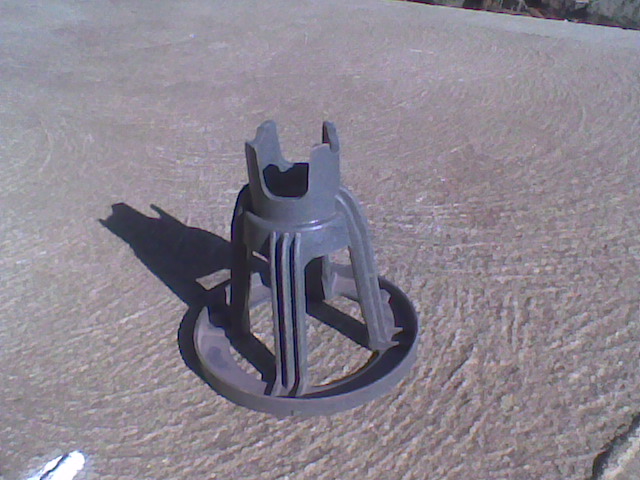No we are not talking about seats in a pub.
Bar Chairs are used to make sure the steel reinforcement in concrete ‘sits’ in the right place.
Here is a typical plastic ‘chair”
And here is a different type.
Getting the steel reinforcement in place is very important in making sure you get the best quality slab. . . .and the only way to make sure is to ‘sit’ the reinforcement mesh, or bars, on these chairs.
The chairs need to be 800mm apart unless the bars in the mesh are greater than7mm diameter.
The reinforcement in paths and driveways should be a minimum of 40mm from the top and bottom of the slab. (This typically means around the middle of the slab)
Some concreters, especially the one who give you a cheap price, will tell you you don’t need bar chairs as they can pull the reinforcement up to the right position with special hooks while they are pouring the concrete*.
This is completely wrong.
Below is a picture of the underside of a concrete slab that had to be dug up due to excessive cracking after using this money saving** ‘technique’.
You can clearly see the rusting reinforcement that was on the underside of the slab was doing nothing to stop the slab cracking.
To ensure you get the best slab make sure there are bar chairs in place while the concrete is being poured…………. I have been told its not unknown to put the chairs in place for a pre-concrete inspection and then take them out before the pour!
*Footnote 1: Many concretors disagree with me. . . but in America where they lay huge amounts of concrete roads they have developed special machines to pull the steel up into place. . . .In 300mm thick slabs they have found that the steel can be 75mm out of place (Federal Highways Administration).
So how can workers correctly “hook and pull” mesh reinforcement accuratly While Standing On The Reinforcement?
**Footnote 2: The actual cost of the chairs works out at around $1/m2 of concrete!
For more posts on on getting your paths and driveways correct see Concreting
